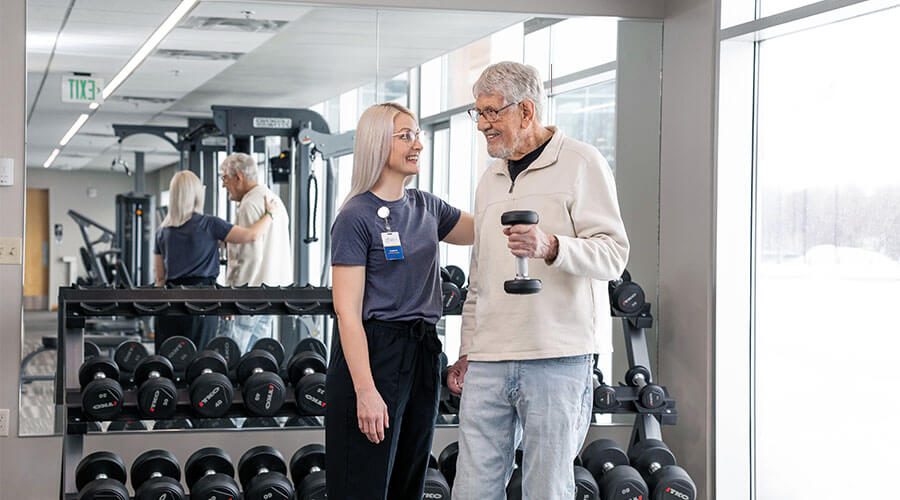Osteoporosis is a disease that weakens bones, resulting in an increased chance of fractures. The older you get, the greater the risk of developing it – especially for women.
Osteoporosis affects half of all women over the age of 50, according to the National Osteoporosis Foundation. And nearly 75% of all hip fractures occur in women.
Changing hormones mean the rate at which bone breaks down exceeds the rate at which it rebuilds. Women can lose up to 20% of their bone density as this happens. As bones become less dense, they also become weaker, causing them to break more easily.
Because of this, it’s important for women to be aware of the risks of developing osteoporosis and the treatment available – like physical therapy.
Reducing risk and treating osteoporosis
Your health care provider can have a risk-vs.-benefit discussion with you to find the safest and most effective option for treatment, which may include medication.
Physical therapy can also help you prevent and manage the disease. The Good Samaritan Society’s physical therapy team can tailor an exercise program to your needs to help strengthen your bones and muscles while helping improve balance and decreasing falls that could have caused bones to break.
If you already have osteoporosis, physical therapy can help you recover more quickly after an injury.
Contact your provider as soon as possible if you suspect you have osteoporosis. They may order a bone density test to determine your risk. Screenings are recommended for women 65 and older.
Causes of osteoporosis
There are several reasons people might develop osteoporosis.
Medications used to treat chronic conditions can have side effects that contribute to developing the disease.
Age is a key factor and family history can also contribute.
If you have a low body mass index, you could be more susceptible. A BMI of less than 18.5, means you could develop osteoporosis. Body mass index (BMI) estimates the amount of body fat a person has based on their height and weight.
Alcohol, smoking, and long-term steroid use also can increase your risk of osteoporosis. It is important to refrain from smoking and avoid excessive alcohol use.
Signs of osteoporosis
Osteoporosis is sometimes called the silent disease. If you have it, you may not realize it.
One of the first signs is often suddenly breaking a bone in the wrist or hip. Once the bone is broken, it may take noticeably longer to heal.
Other signs might be changes in your body, like the curvature of your spine. Your posture might be different than it used to be, causing you to bend forward more when sitting and walking.
You might also notice back pain or experience trouble breathing.
Even if you haven’t noticed signs of osteoporosis, it could be helpful to ask a loved one if they’ve observed anything out of the ordinary.
And remember there are treatment options available that can help.
Learn more about the benefits of physical therapy



